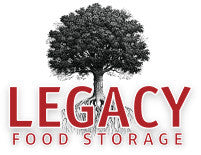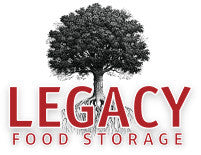Water is Essential for Emergency Preparedness
Before collecting food, clothing, shelter, money, or any other item, the single most important thing to account for in your emergency preparedness plan is water. It is essential to life, you need it more than food, and without it your survival gear won’t be complete. Water is the most common substance on earth. Though 70% of the earth is covered in water, less than 3% of the total water volume is fresh water that can be consumed by humans. And more than 80% of fresh water is in the form of glacial ice. I don’t know about anyone else’s situation but I don’t have convenient access to a glacier if there were an emergency. Further, most of the remaining fresh water is underground, leaving only 5% as surface water. This isn’t all. Two other items affecting water supply: increased global consumption and pollution. Bottom line, water is a scarce and diminishing resource.The average person in the U.S. uses 65 gallons of water per day. That’s much more than what anyone would actually require, but in the event that the delivery of water to your home is cut off you’ll still need a clean source for drinking, cooking, and sanitation. Access to water is often disrupted after a disaster, meaning you will be responsible for the availability and quality of your own water supply. The first and best option for a two to three day emergency is to have an adequate supply of water safely stocked. Water storage can be done in many ways, and many people utilize jugs, bottles or other larger containers such as 50-gallon drums. The second option is to have a way to treat or purify water in case your source is contaminated. In the past, this process was difficult and cumbersome, but today the process can be simple and inexpensive. We offer portable water filters that can easily clean water from local rivers, streams, and lakes, and the purity of the water you get after using these products can actually be cleaner than the water coming from your own kitchen faucet.I might suggest the best water storage plan is to have stored water in jugs and bottles as well as the purification bottles, jugs, bags, etc. This can all be done inexpensively. Points to remember: •People use more water during emergencies •Pregnant women need to drink more water than normal•Infants and children need as much water during times of stress as an adult•Severe dehydration or death can occur within 3-5 days without waterWater is an absolute necessity for any emergency plan, but it can also be one of the easiest and least expensive steps in being prepared. Get going and know it is taken care of. You’ll be relieved knowing that it’s done. —Phil—Phil is a husband and father of three. He has a graduate degree in business and professional experience in real estate and fund raising. Phil and his wife have become interested in emergency preparedness over the last two years.
The post Water is Essential for Emergency Preparedness appeared first on Buy Emergency Food.
Tags
- All
- 25 year food
- 25 year shelf life food
- 72 hour kit
- Best food storage types
- Best long-term food storage
- Blizzard preparedness
- Budgeting
- canning
- Certified GMO-free Emergency foods
- Certified GMO-free foods
- Coffee
- Comparison of emergency food methods
- Composting tips
- Dangers of genetically modified foods
- dehydrated food
- Edible Wild Plants
- emergcy preparedness
- Emergency Cooking
- Emergency Food
- Emergency food Christmas gifts
- emergency food storage
- Emergency Food Supply
- Emergency food supply recommendations
- Emergency Planning
- Emergency Preparedness
- Emergency preparedness advice
- emergency preparednesss
- Emergency Supplies
- Emergency supplies checklist
- Emergency Survival
- emergency survival gear
- Emergency survival kit checklist
- Emergency Survival skills
- exercise
- Family emergency preparedness
- Family emergency preparedness plan
- Family Preparedness
- Food Storage
- Food storage 25 year shelf life
- Food storage amounts
- Food storage Christmas
- Food storage containers long term
- Food Storage Secrets
- Food storage serving size
- Food storage types compared
- freeze dried food
- Freeze dried food storage
- freeze dried meats
- Freeze-dried emergency food storage
- Fruit Trees
- Gardening
- Getting Started
- Gluten-free food Storage
- Gourmet emergency food
- Healthy food storage
- How much emergency food to store
- Improved emergency preparedness
- Jared Markin
- Jared Matkin
- Legacy Premium
- Lessons learned from Hurricane Sandy
- Lessons learned from natural disasters
- long-term food storage
- Long-term Food Storage Guidelines
- Long-term Food Storage tips
- Long-term water storage
- Mental Emergency Preparedness
- Mental toughness
- Money-saving tips
- Natural disaster planning
- Natural Disasters
- Perfect Christmas gifts
- Pet Emergency preparedness checklist
- Pet Emergency preparedness kit
- Pet Emergency Survival tips
- Pets and Emergency Preparedness
- Plant Foraging
- portable solar panels
- portable solar power
- portable water filters
- protein drinks
- Risk of genetic modification
- Seed saving and storage
- Seed saving guide
- Self-reliance
- Self-reliant practices
- Shelf Life
- Solar Cooking
- Solar Ovens
- Special Dietary needs
- Stranded in a car in a blizzard
- Survival food
- Survival Gear
- survival kit
- Survival kits
- Survival Ovens
- Survival Skills
- survivalist gear
- suvival kit
- Tree Pruning tips
- Tree Trimming basics
- unique ideas
- water bottle with filter
- water filter
- water filter straw
- water filters
- Water Filtration
- water pitcher with filter
- water pitchers with filters
- Water purification
- Wild Food Foraging
- Winter composting
- Winter driving
- Winter preparedness tips
- Winter storm preparedness tips
- Winter Survival







